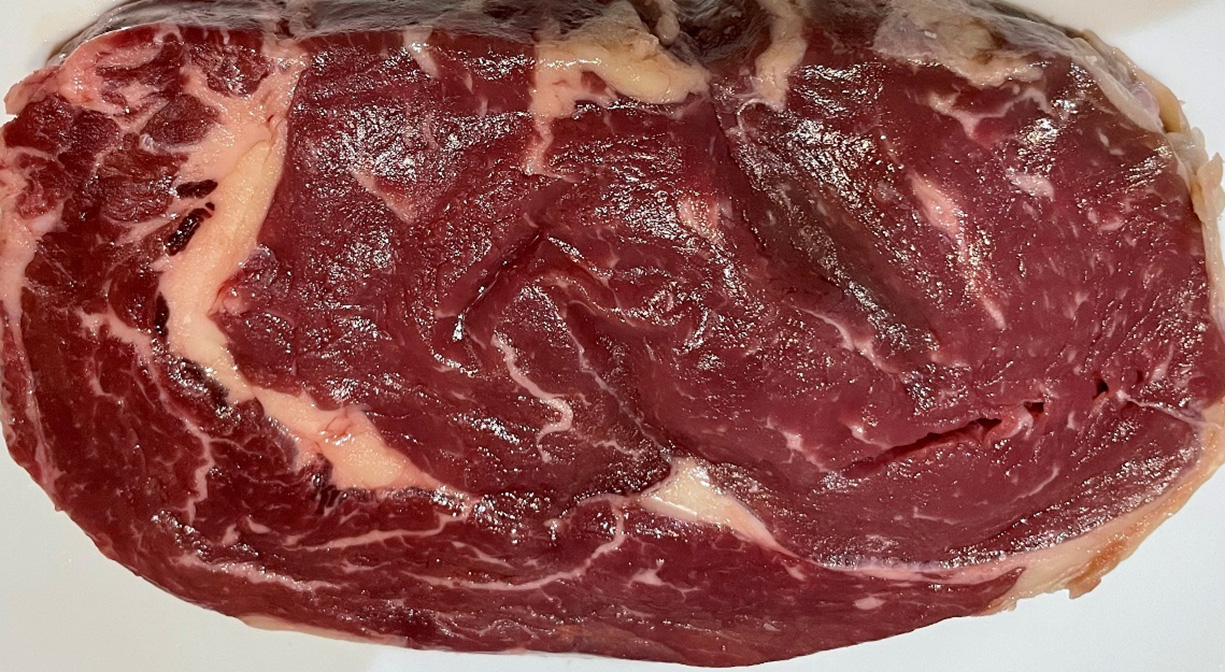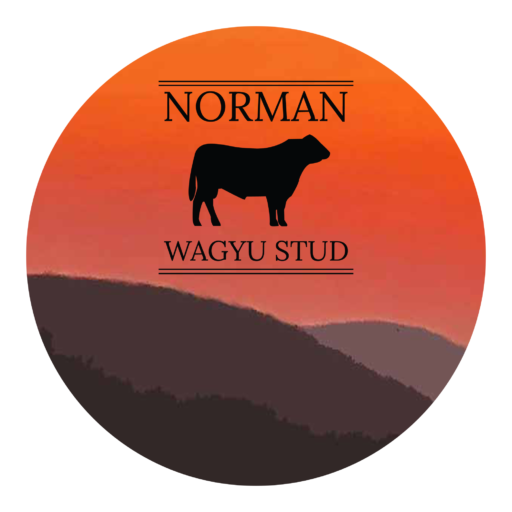Norman Wagyu Stud
What is Marbling?
Marbling describes the intramuscular fat in red meat, which shows as white flecks and bands in the cut surface. The name is derived from the appearance of these fat accumulations in lean muscle, which creates a pattern similar to stone-marble, as shown in the image.
By increasing marbling, the juiciness, tenderness, texture, and flavour of meat are all improved. Therefore, increased marbling improves the eating experience of the meat. But even more importantly, the fine marbling fat from Wagyu beef has a high content of healthy oleic acid.
Intramuscular fat should not be confused with intermuscular fat, which is the fat between the muscles. That fat, which is typically trimmed, does not enhance a piece of meat. More information on the health benefits of intra muscular marbling fat from grass-fed beef can be found here.

What Are the Different Types of Marbling in Meat?
Marbling comes in different shapes and sizes, and there is variation in the desirability of different marbling types. Although there are varying opinions regarding the quality of different types of marbling, the following is the generally accepted standard.
- Fine marbling. The lean muscle has a high frequency of thin, evenly distributed flecks of fat. These fine flecks melt during cooking, adding juiciness and tenderness throughout the meat. In the restaurant world, the most desirable types, like Kobe and Wagyu beef, have a high frequency and even distribution of fine marbling.
- Medium marbling. An inferior form of marbling, it features larger, less evenly distributed flecks of fat, which don’t melt and disperse evenly. This provides a reduced cooking and eating experience compared to meat with fine marbling.
- Coarse marbling. The least desirable type of the marbling types, coarse marbling presents large, uneven flecks of intramuscular fat. This results in reduced juiciness, tenderness and flavour compared to a finely-marbled cut.
What Factors Affect Meat Marbling?
The discipline of Meat Science has studied factors affecting meat quality, and marbling has been found to be one of those factors with a profound influence on the consumer experience and consumer health. Making beef production and quality more predictable and uniform enhances the consumer confidence in the product. The following factors affecting marbling in beef have been identified:
- Breed genetics: Japanese Wagyu, and Kobe breeds have higher fine-marbling scores on average due to the way they metabolise food. The genetics of the breed can also affect the ratio of Omega-3 to Omega-6 fatty acids. For example, Wagyu, which is higher in Omega-3s, provides a healthier end-product. More information can be found here.
- Feed. The type of feed and time that an animal feeds both play important roles in the development of marbling. If beef cattle aren’t gaining weight properly, marbling will disappear from their muscles quickly. Cattle that feed on grain often marble more easily than strictly grass-fed cattle, but not every feed is the same and, due to metabolism, not every breed is the same.
Why Is Marbling in Meat Important?
Marbling in uncooked meat looks aesthetically interesting, but that is not why it’s special. The presence and type of marbling in meat is important for the following reasons:
- When cooking, marbling adds flavour and juiciness as the fat melts into the steak. The marbling keeps the meat moist, so other, natural juices don’t evaporate in the pan.
- Fat is far more tender than muscle fibre in steak. As a result, marbling adds tenderness, which is a preferable mouthfeel.
- Some fats are undeniably bad for you, but the intramuscular fat that creates marbling are considered good for you. Breeds like Wagyu are higher in healthier fats like oleic acid, which can reduce the risk of coronary heart disease.
